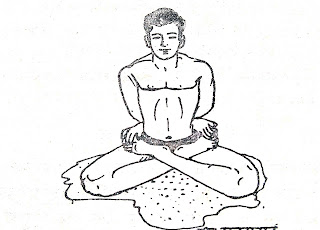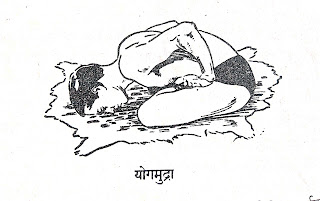12. Halasan.
How to do : - Four different positions of this seat can be taken. In this asana, your body is shaped like a plowshare, hence it is called Halasan. Before starting, he used to lie down on the ground with his legs crossed and his hands resting on the ground with his hands on the sides of his body. Now out of this situation ....
* Keep your hands on the ground and lift your legs and keep your toes at the back of the head. This puts a good strain on the spinal cord.
* Move the toes forward a little so that there is tension on the back of the abdomen.
* After that keep the hands on the ground and move the legs backwards as much as possible, in this position tension occurs on the back spine of the heart.
* Lift the hands on the ground and bring them under the neck and judge the legs as far back as possible, so that there is tension on the neck.
In this way, it can be assumed that Halasan was proved by doing different asanas. To get to this seat, you should practice turning your back every day for three to four weeks.
When and for how long? : - This seat should be done in the morning or evening along with other seats. This seat should be done especially in Anshepoti. Repeat for a while in the different positions mentioned above. By staying in the same position, the spine does not get the same exercise. Do this asana alternately in the above four positions. Breathing should not be stopped, it should be done as easily as possible.
Uses: - In the first position of Halasana, it has a good effect on the muscles and nerves in the hips and thighs. This seat is very important for the health of the spine. In the second case, there is a good tension between the heart and the spinal cord. Halasana is very useful for simple ailments like back pain and back pain. Studying Halasana's two conditions will not cause back pain. If her back hurts due to some labor, this asana will cure her.
The person doing this asana does not get back pain easily. In the fourth position, the spinal cord is strained. Pressure on the thyroid gland improves the function of the glands and benefits the whole body. This asana eliminates the fatigue caused by physical exertion. This asana puts a kind of tension on all the nerves in the body and brings freshness. There is an experience that this seat heals a sore back for any reason. Sometimes the back muscles hurt when you start doing this asana. But if you do it slowly, this posture will refresh the whole back and make the spine strong.
---- @ ----













